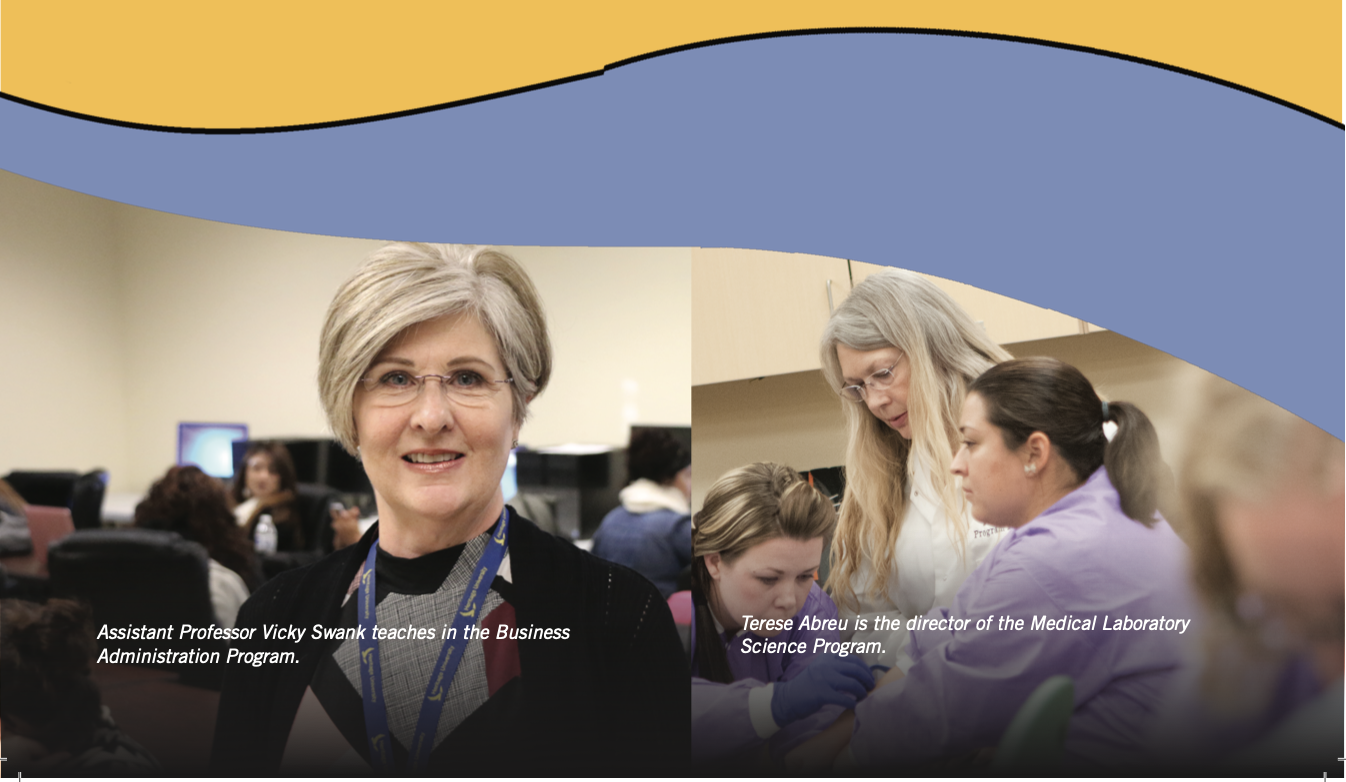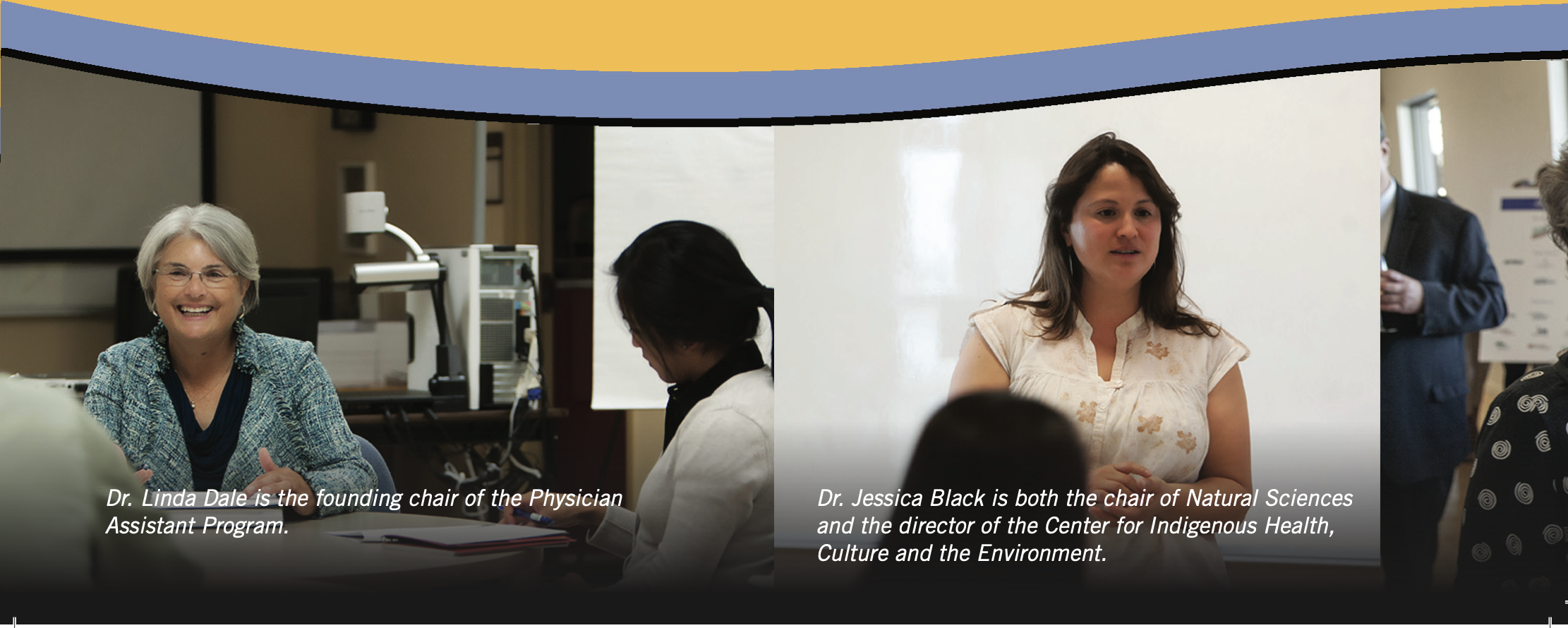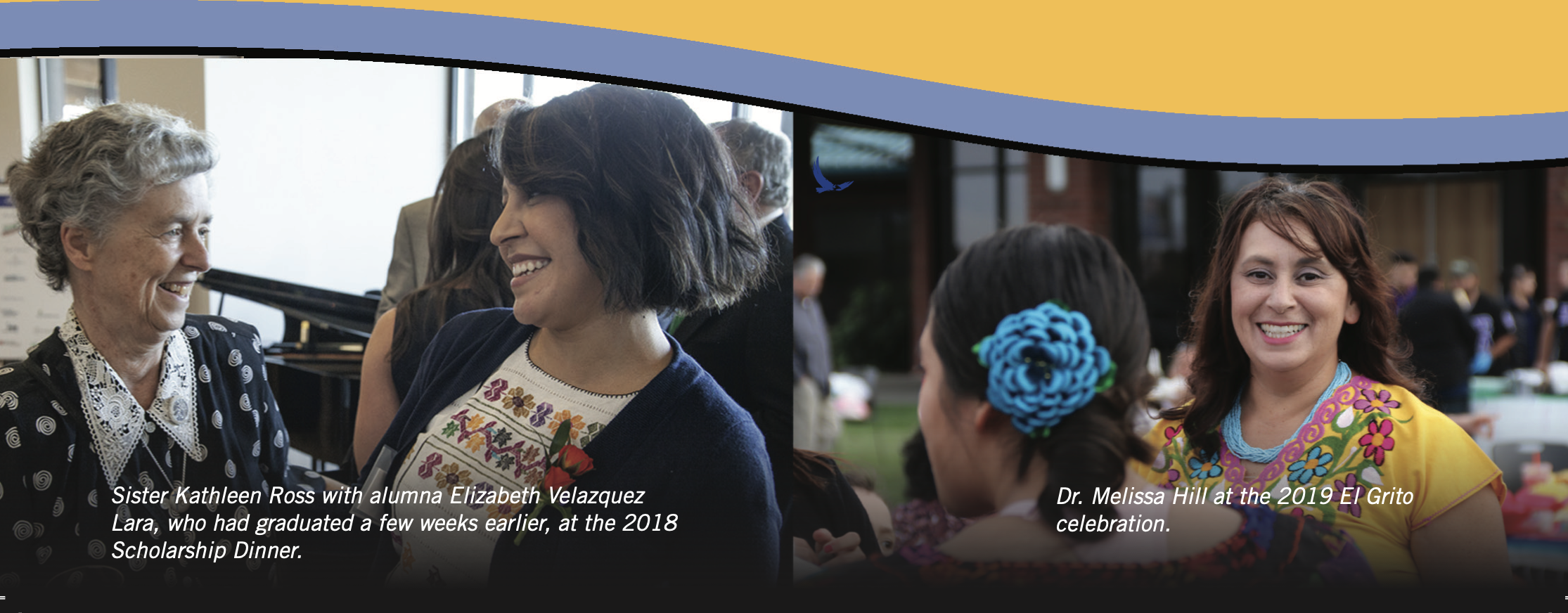Women Power!
Back in 1982 when Sr. Kathleen Ross, Violet Lumley Rau and Martha Yallup started Heritage University, they began something truly rare—a co-ed college founded by women, run by women, with classes taught by women. Back in the university’s early days, the proverbial glass ceiling was solidly in place over academia with women making up only 9% of college presidencies and 27% of the professoriate nationally.
While the role of women in higher education leadership has expanded in this country over the past 30 years, a significant gap between the genders remains, with 86% of university leadership and 75% of professors being male. However, it is a different story at Heritage. The university started by women continues to break the curve when it comes to female representation in the professoriate. Nearly 60% of the academic program chairs and half the full-time faculty at Heritage are women.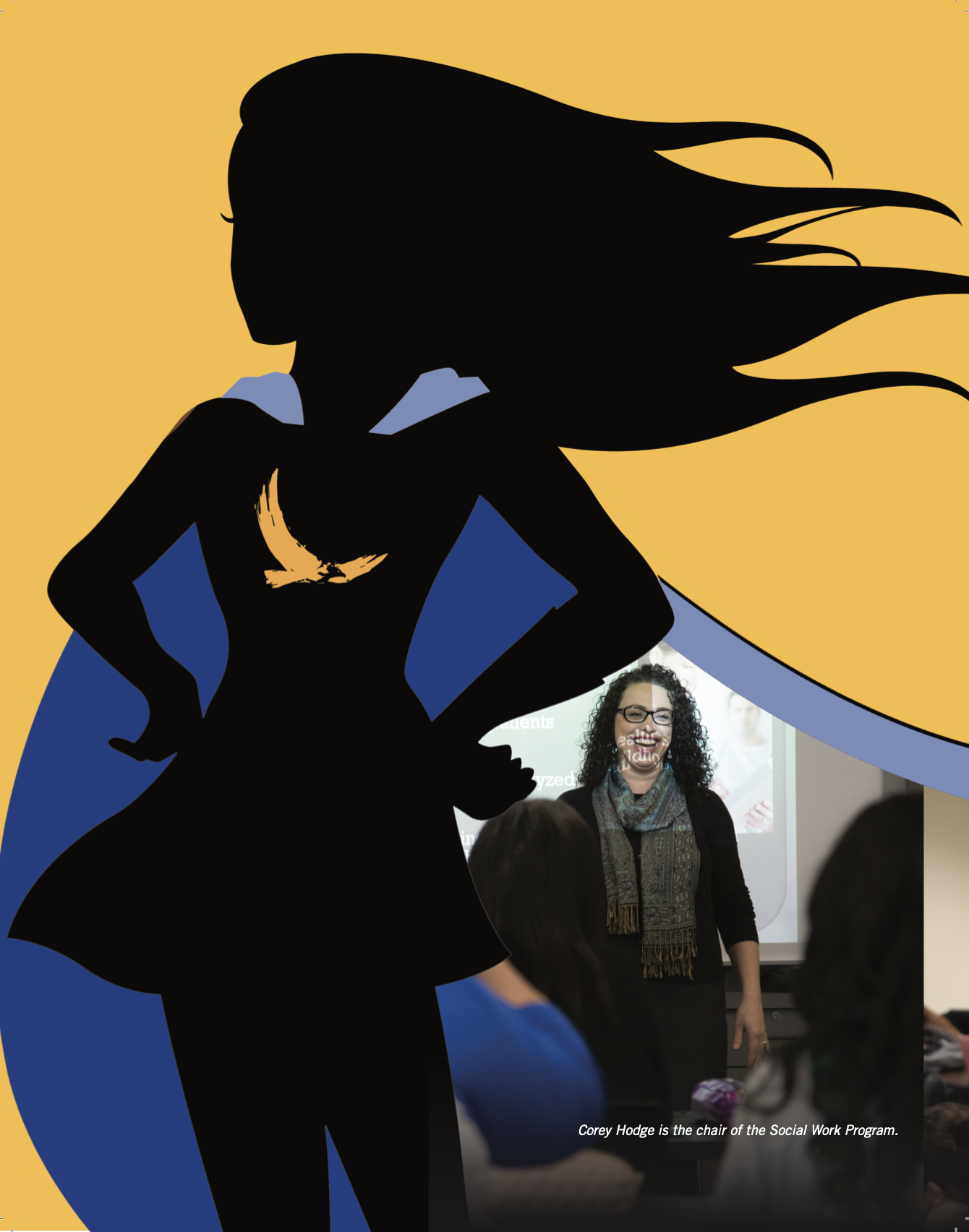
“I don’t find this too surprising for my generation,” said Dr. Melissa Hill, Heritage’s vice president of student affairs. “Diversity is a core value for our institution; that includes gender diversity. Keep in mind that our student body is overwhelmingly female—70% of our students are women. One of the benefits of having so many women in leadership positions is how they become role models for their students, many of whom have had limited exposure to the wide range of opportunities that are open to them as future college graduates.”
THE PATH FROM STUDENT TO PROFESSOR
For many of Heritage’s female faculty members, the memories of being a young woman filled with dreams and doubts are vividly etched in their minds. They can relate to students’ experiences juggling complex lives filled with multiple demands on top of the stress that comes from being a college student because they’ve been there. It is a common bond that helps faculty connect with their students’ and empowers students who see in their professors someone who’s been through similar situations, persisted and reached their goals. 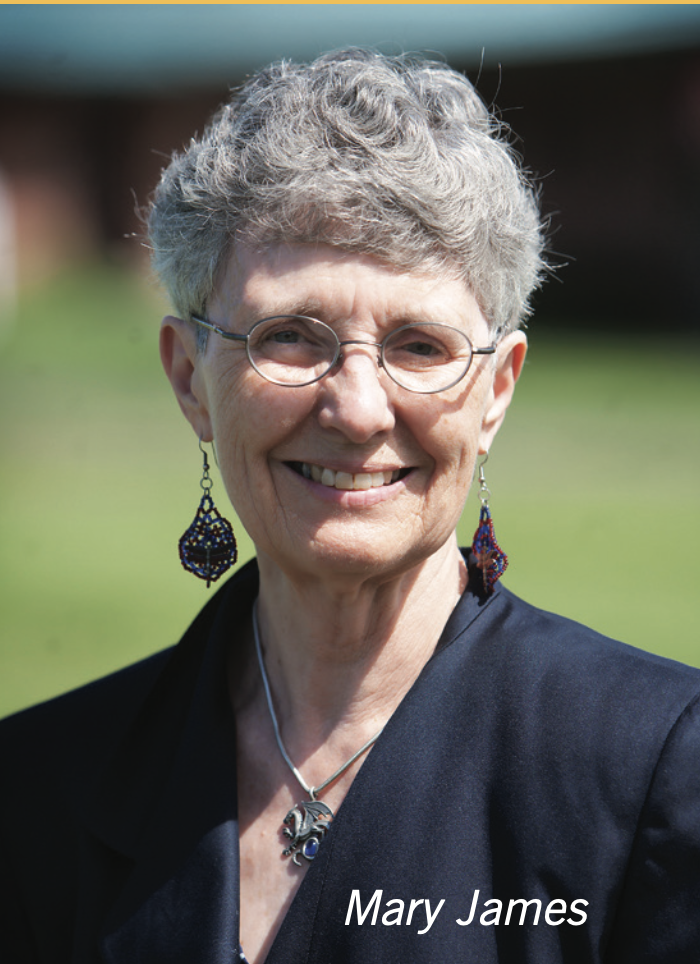 Mary James, one of the university’s longest-tenured faculty members who co-facilitates the Center for Intercultural Learning and Teaching and is the special assistant for logistics and evaluation recalls the challenges of being a young, professional woman in the early 1970s. It was a time of change for women; coming off the heels of the 1964 Civil Rights Act, which banned discrimination based on sex and ethnicity, and the Title IX Education Amendments of 1972 that provided protections for women on college campuses.
Mary James, one of the university’s longest-tenured faculty members who co-facilitates the Center for Intercultural Learning and Teaching and is the special assistant for logistics and evaluation recalls the challenges of being a young, professional woman in the early 1970s. It was a time of change for women; coming off the heels of the 1964 Civil Rights Act, which banned discrimination based on sex and ethnicity, and the Title IX Education Amendments of 1972 that provided protections for women on college campuses.
“I remember applying for a car loan back in 1972 and being denied because I was of ‘child-bearing age,’” she said. “When I went back to college to earn my master’s degree in English, there wasn’t a single faculty member who was a woman in that department.”
James was determined to have a voice and to help build equity for all people. She joined women’s political movements and became a strategist. In 1984, she led a campaign for a woman who was a long shot, an outsider running for superior court judge. She won! James built a political career in the Washington state capital of Olympia, lobbying for safety nets, such as domestic violence laws, to protect women. She was passionate about empowering young women, particularly those who were indigenous and immigrants. She wanted to have a more direct impact on individuals. James left her career in politics and joined Heritage.
“I never want to presume that I know what is best for our students. My job isn’t to tell them what to do with their lives,” she said. “I am here to help students grow their skills so that they can accomplish their goals.”
 Dr. Christina Nyirati, director of Heritage’s Nursing Program, can relate to James’s experience of being a woman learning in a male-dominated environment. However, in her case, she found a mentor in Dr. Grayce Sills, then a giant in the field of psychiatric nursing who led the nursing program at The Ohio State University.
Dr. Christina Nyirati, director of Heritage’s Nursing Program, can relate to James’s experience of being a woman learning in a male-dominated environment. However, in her case, she found a mentor in Dr. Grayce Sills, then a giant in the field of psychiatric nursing who led the nursing program at The Ohio State University.
“Dr. Sills’ lessons were monumental for me because she was deliberate in her choice to mentor me,” said Nyirati.
She and Sills spoke often about the power differentials between women and men. At that time, men dominated medical schools while nursing was mainly made up of women. Many nurses were afraid of speaking up, and at times, felt implicit pressure to tell medical doctors, who were mostly men, what they wanted to hear rather than what the nurses understood from their experience and knowledge.
Those conversations and the lessons of perseverance and taking risks that she learned as she built her career stuck with Nyirati. She uses these today with her own students and is as intentional in her mentoring of young women as her mentor was those years ago.
“My students are my junior colleagues,” she said. “Just this week, a young nursing student came in to see me. She explained her self-doubt. I know what this woman is capable of! She asked me, ‘Do you think I can do this?’ I told her, ‘I will work as hard as you do on your behalf to support your success.’ They’ve not often had people who believe in them and tell them they can do it. It makes all the difference in their worlds.”
UNIVERSALLY GOOD
Women in academia aren’t just good for other women, said Hill, it benefits everyone.
“It’s about balance,” she said. “Our job is to provide a quality education that challenges all of our students and prepares them to be leaders in their communities after they graduate. The reality of our world is that we are a diverse network of people from many different genders, ethnicities, backgrounds and beliefs. We all bring different skills and talents to the table and we need everyone to be present, to have a voice, in order to thrive. We can’t do this if only one perspective, male or female, is represented.
“Do we need more women in higher education? Yes! Just like we need more women in leadership positions across every industry,” she said. “If we start in academia, where men and women learn to think critically and build their world view, we can affect change far beyond our classrooms.
Those conversations and the lessons of perseverance and taking risks that she learned as she built her career stuck with Nyirati. She uses these today with her own students and is as intentional in her mentoring of young women as her mentor was those years ago.
“My students are my junior colleagues,” she said. “Just this week, a young nursing student came in to need everyone to be present, to have a voice, in order to thrive. We can’t do this if only one perspective, male or female, is represented.
“Do we need more women in higher education? Yes! Just like we need more women in leadership positions across every industry,” she said. “If we start in academia, where men and women learn to think critically and build their world view, we can affect change far beyond our classrooms.”


